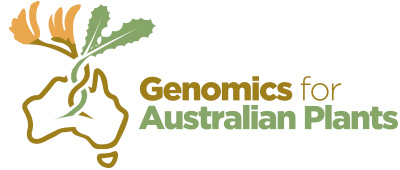Nov 2019 Updates – Phylogenomics
Updated on 2020-01-21
Prepared by Darren Crayn
Throughout the year, the GAP Phylogenomics Working Group has been developing the aims, processes and protocols for this large and complex project.
Key progress to date includes:
1. Engagement and discussions with Kew to align with the PAFTOL[1] project
2. Defined the aims of the project. These are outlined below, and are available here.
3. Established need for pilot experiment to determine appropriate bait set for Hyb-Seq approach
4. Community participation in pilot experiment (sharing of DNA libraries) invited through EOI process
· 6 responses received | 983 libraries representing >80 families offered
5. Pilot experiment plan
· 166 samples – head to head test of Angiosperms353 baits and Waycott baits
· 8 samples – combination Angiosperms353 + Waycott baits
6. Prepared 3-page handout for ASBS 2019 conference
7. Drafting underway for an EOI to complete Aim 1 (generate a dataset containing one exemplar species of 95% of accepted Australian angiosperm genera).
8. EOI for sample coordinator role circulated
· 2 responses received | Position has been offered
Next steps:
1. EOI for Aim 1 will be circulated soon. EOI will run concurrently with pilot experiment.
2. The Working Group will have stall at ASBS 2019 conference in Wellington (NZ) to share information and engage with potential project participants
Synopsis of the GAP Phylogenomics Project (Nov 2019)
About GAP
About GAP Phylogenomics
GAP Data Portal
GAP Agreements and Policies
Working Group
Lead | Darren Crayn | Australian Tropical Herbarium
Daniel Murphy | Royal Botanic Gardens Victoria
Hervé Sauquet | Royal Botanic Garden Sydney
Katharina Nargar | CSIRO/Australian Tropical Herbarium
Kelly Shepherd | Western Australian Herbarium
Matthew Barrett | Australian Tropical Herbarium
Michelle Waycott | State Herbarium of South Australia and University of Adelaide
Sarah Mathews | CSIRO
Anna Syme | Royal Botanic Gardens Victoria – GAP bioinformatician
Chris Jackson | Royal Botanic Gardens Victoria – GAP bioinformatician
Mabel Lum (Observer) | Bioplatforms Australia – GAP Project Manager
Johan Gustafsson (Observer) | Bioplatforms Australia – Bioinformatics Engagement Officer
The GAP Phylogenomics project has the ambitious long-term goal of producing a published phylogenetic tree containing 95% of Australian angiosperm species (and their sisters). This is to be achieved by supporting collaborators to achieve their research goals where they contribute to GAP Phylogenomics goals, and coordinating efforts across the community. Work will proceed in three stages as follows. GAP will prioritise completion of the first two stages. The third stage is beyond current resources.
1. In collaboration with Plant and Fungal Tree of Life project (PAFTOL)[1], generate a dataset containing one exemplar species of 95% of accepted (APC[2]) Australian angiosperm genera.
2. Generate a dataset containing at least three exemplar species of 95% of accepted (APC) Australian angiosperm genera (for those genera with three or more species). At most one species per genus should be a non-Australian species.
3. Generate a dataset that is 95% complete at species level.
The GAP phylogenomics project will initially adopt a target capture approach using a common set of at least 300 nuclear markers, with plastid markers potentially recovered as off target reads. This will maximise the chance of resolving the backbone of the phylogeny (i.e. to genus level) to provide a phylogenetic framework for continental-scale systematic, ecological and evolutionary studies. Future work (i.e. stage 3 above) will focus on detailed studies of specific clades, which will likely require the development of bespoke marker sets on a clade by clade basis.
Like all GAP projects, GAP Phylogenomics was conceived to provide genomics resources to the Australian plant systematics community. As such, GAP warmly invites the participation of interested researchers at all stages of this project.
GAP has an open data philosophy. Data will be available only to GAP consortium members for the first 12 months to enable members to advance their own research and publications, after which time data will be made publicly available through the GAP Data Portal.
The GAP project will initially collaborate with the Plant and Fungal Tree of Life project (PAFTOL) to achieve the first of the three stages. PAFTOL aims to estimate a genus-complete phylogeny of the world’s angiosperms (c. 14,000 genera) using the Angiosperms353[3] target capture nuclear bait set. PAFTOL is in the final two years of its program and current funds are insufficient to complete more than 50-60% of genera. The GAP – PAFTOL collaboration ensures at least 95% coverage of Australian genera.
A species-complete phylogeny (third project stage) would transform research on and knowledge of the Australian flora, by providing a step change in data resources for systematics, ecology, evolutionary biology and conservation. Importantly, it would help deliver many of the Strategic Actions under the Decadal Plan for Taxonomy and Systematics[4], particularly:
1.1 We will significantly increase the rate at which new species in Australia and New Zealand are discovered, resolved, named and documented,
1.3 We will build a comprehensive framework to understand the evolution of the Australian and New Zealand biota,
2.1 We will create a comprehensive, integrated, accessible service for the identification of Australian and New Zealand organisms, based on DNA sequences, morphology and images, and 4.3 We will build a curated, vouchered reference library of DNA sequences covering the breadth of the tree of life in our region.
[1] https://www.kew.org/science/our-science/projects/plant-and-fungal-trees-of-life
[2] Australian Plant Census – https://biodiversity.org.au/nsl/services/APC
[3] Johnson et al. (2018) – https://doi.org/10.1093/sysbio/syy086
[4] https://www.science.org.au/support/analysis/decadal-plans-science/discovering-biodiversity-decadal-plan-taxonomy
